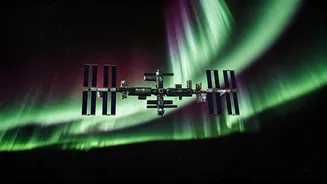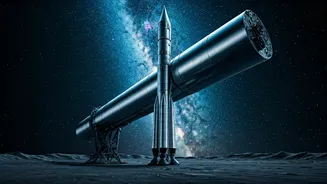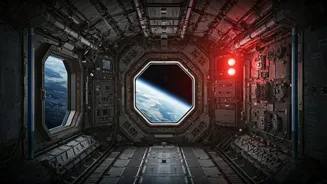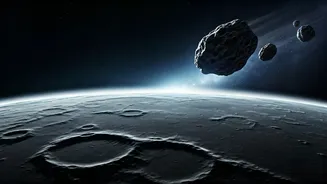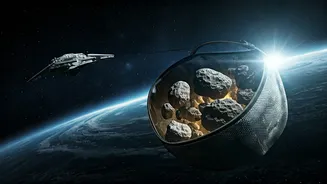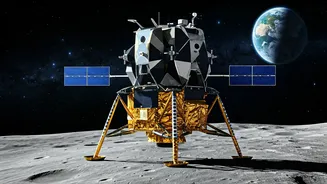Asteroid Mining Dreams
The concept of asteroid mining, though ambitious, offers a tantalizing prospect. These space rocks are rich with both common and rare metals. If efficiently
harvested, asteroids could provide a sustainable alternative to traditional mining on Earth. Traditional mining often damages the environment. Despite the potential rewards, asteroid mining presents considerable hurdles. Joel Sercel, an aerospace engineer and founder of TransAstra, identifies four major challenges: detecting, capturing, moving, and processing the asteroids. But, with innovative approaches, these obstacles can be overcome, paving the way for a true industrial revolution in space, as early as 2028. The company is committed to achieving this feat.
The Capture Bag Design
The centerpiece of TransAstra's plan is the Capture Bag, an ingenious inflatable device. It comes in different sizes, allowing it to capture everything from small rocks to massive asteroids that weigh up to 10,000 tons. The design of the Capture Bag is a flexible solution to an otherwise tricky problem. The flexible bag offers a gentler, more adaptable means of capturing and securing these potentially unpredictable celestial objects. The bag technology was initially tested on the International Space Station (ISS) and is now undergoing upgrades, with the support of both NASA and private funding, which is a major step forward. This innovation not only targets asteroids but also offers a solution for removing space debris. It works by sending a spacecraft equipped with the Capture Bag to rendezvous with the target object, whether it is an asteroid or a piece of space debris. Upon arrival, the bag inflates around the target, safely encapsulating it.
Tackling Space Debris
Before venturing into the high-stakes world of asteroid mining, the Capture Bag will first be employed in a vital role: cleaning up space debris. Space junk, the remnants of defunct satellites and other objects, poses a growing threat to active spacecraft. TransAstra's Capture Bag is designed to mitigate this risk by capturing and removing this debris, creating a safer environment for space activities. The company recognizes the urgency of this issue and has positioned the Capture Bag as a proactive solution. This dual-purpose design highlights the versatility and strategic importance of the Capture Bag technology. By tackling space debris, TransAstra is contributing to the sustainability of space exploration while also building essential expertise and proving its technology.
Financial and Technical Support
TransAstra has secured significant funding to advance its ambitious projects. The company has raised $12 million from private investors, a testament to the belief in its vision. It has also received $15 million in contracts from NASA and the US Space Force. The company is targeting asteroids in Earth-like orbits, which makes the asteroids easier to reach. The fact that the asteroids are only a few billion kilometers away makes them prime targets for mining. While asteroid mining is an incredibly difficult undertaking, with only three successful sample-return missions by governments to date, the development of the Capture Bag represents a significant step forward. The Capture Bag provides a gentler method to handle potentially unpredictable asteroid materials.
Future Ambitions and Timeline
TransAstra's ultimate goal is to harness the Capture Bag for asteroid mining, aiming to kickstart a new industrial revolution in space. With a target launch date of 2028, the company is on track to begin capturing asteroids for resource extraction. This ambitious timeline reflects TransAstra's confidence in its technology and its determination to lead the charge in space-based resource utilization. The successful deployment of the Capture Bag and subsequent mining operations would mark a paradigm shift in how we approach resource acquisition, promising a new era of space exploration and economic possibilities.


